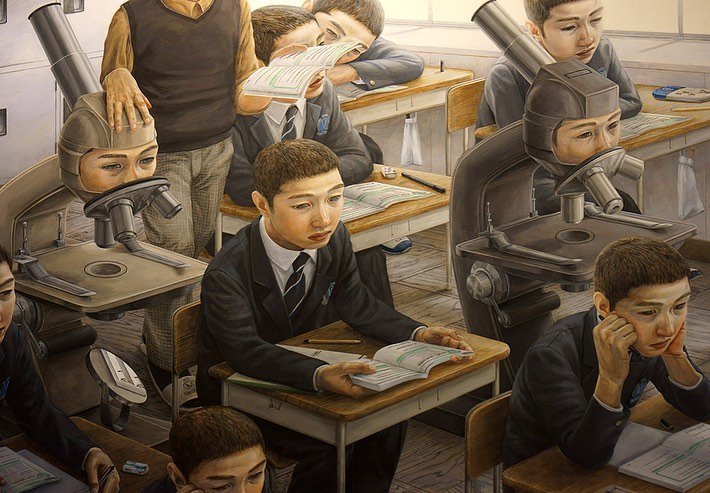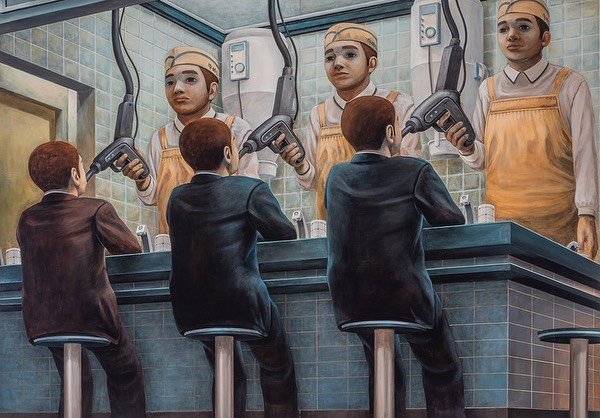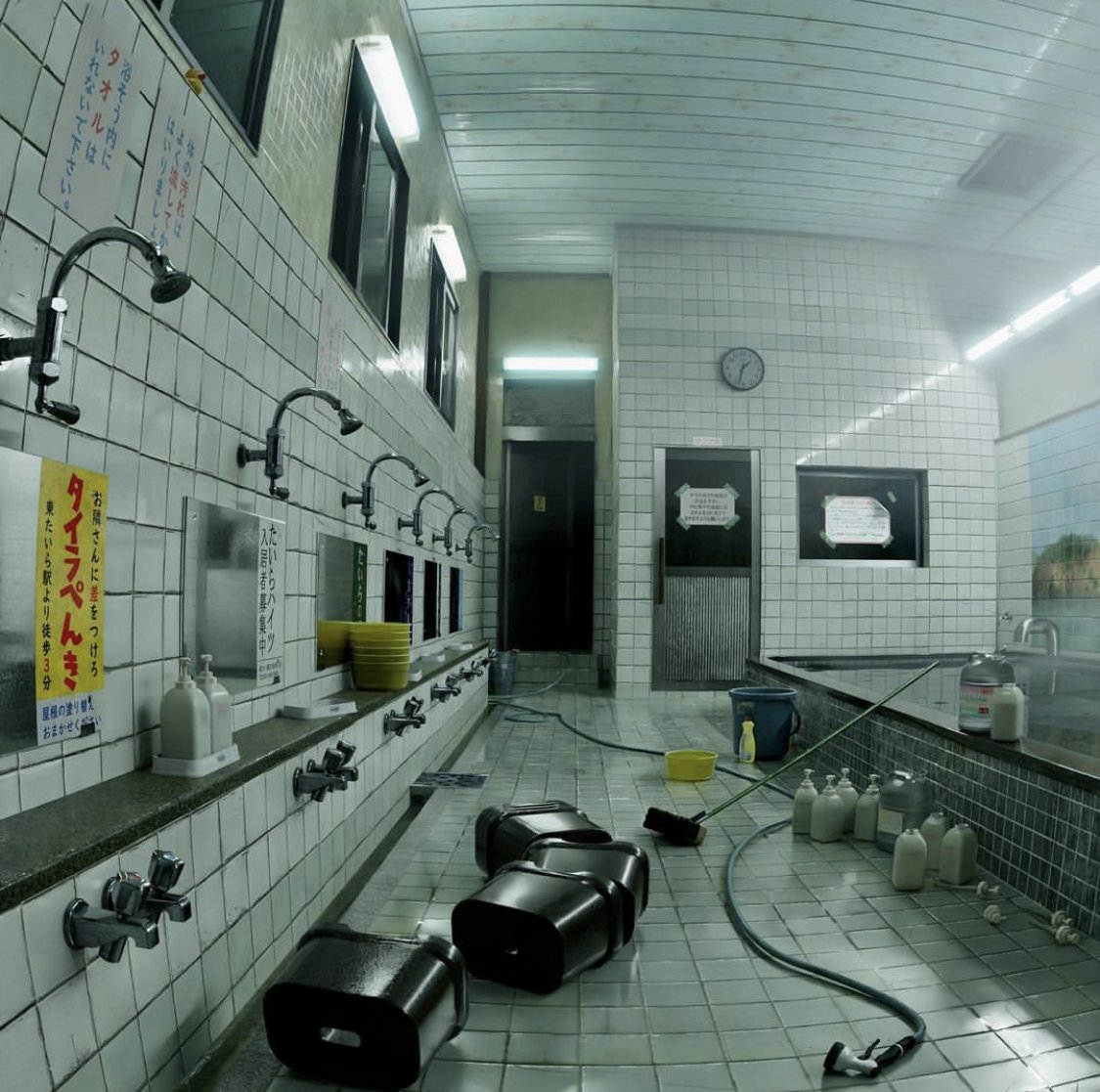Depicting The Lost Generation - The Paintings of Tetsuya Ishida

Tetsuya Ishida’s Kafkaesque paintings reflect the psychological malaise of growing up in Japan’s “lost decade” of economic turmoil.
His paintings depict humanoid figures in surreal environments, reflecting on uncertainty and unease. Ishida’s practice grew out of a self-portraiture that used absurdist humour to address his emotional abjection.
“I tried to make myself—my weak self, my pitiful self, my anxious self—into a joke or something funny that could be laughed at”
Tetsuya Ishida
The late painter was born in Yaizu in 1973, a port city known for its fishing industry and a tragic disaster that occurred in 1954 which involved a Japanese fishing boat being caught by a radioactive missile test, the whole crew suffering from acute radiation syndromes. U.S. artist Ben Shahn drew attention to the disaster in a series of works that were shown decades later in Yaizu when Ishida was eight years old. After seeing Shahn’s pieces, Ishida wrote in his diary that he would become a painter.
Ishida pursued his dream and finished art school during Japan’s Lost Decade, a time of economic and political crisis amplified by earthquakes, gas attacks, mass murders, and a nationwide preoccupation with doomsday theories, all factors having an immense impact on Ishida’s art.
In Waiting for a Chance (1999), for example, Ishida paints a hospital room and captures melancholy and apprehension in his figure’s face. Yet the patients sit and lie on derelict cars instead of beds: a farcical gesture that ties the painting’s emotional atmosphere to questions of the uncertainty of Japan’s industrial, economic, and social futures.
Almost sixteen years after his death in 2005, Ishida’s paintings resonate more than ever. Between empathy and estrangement, resignation and hope, Ishida reflects the dehumanization of the contemporary era as few others can.













